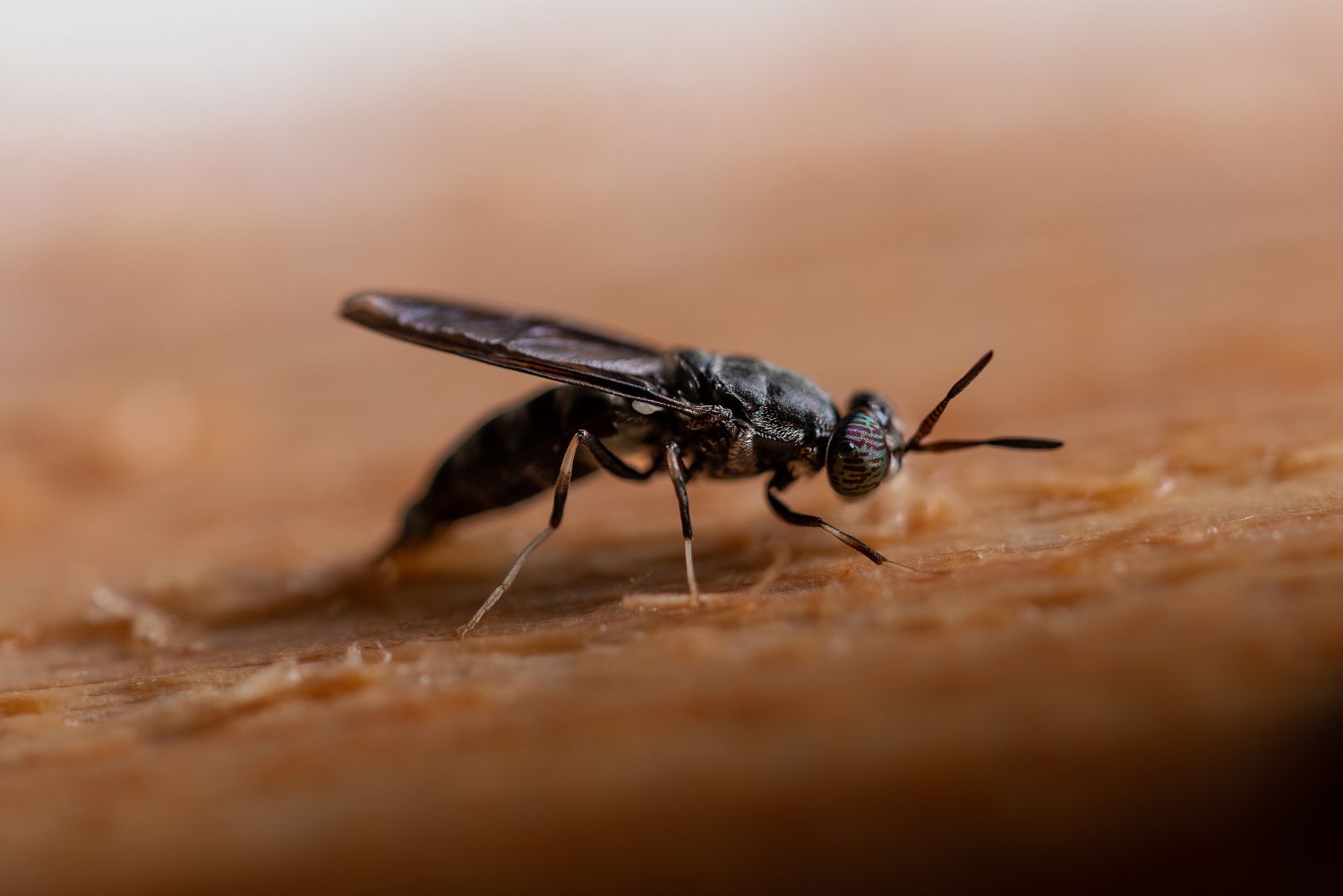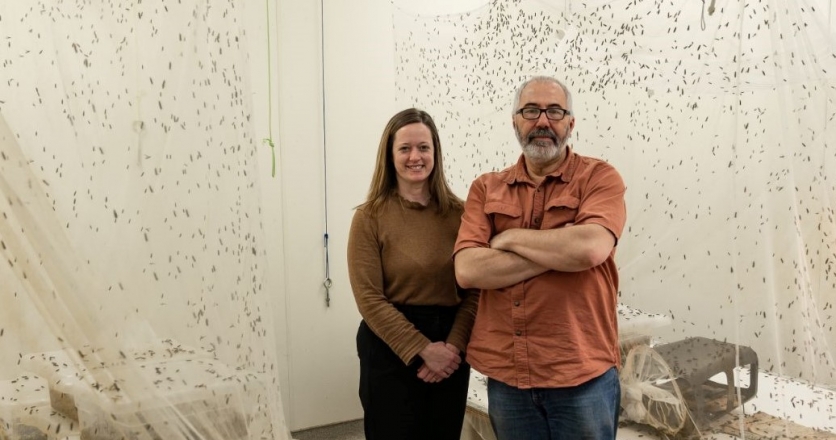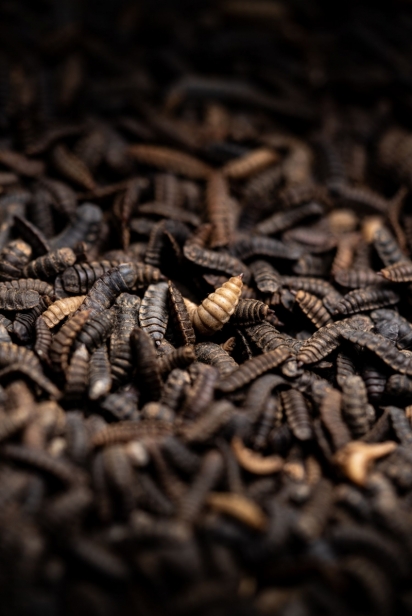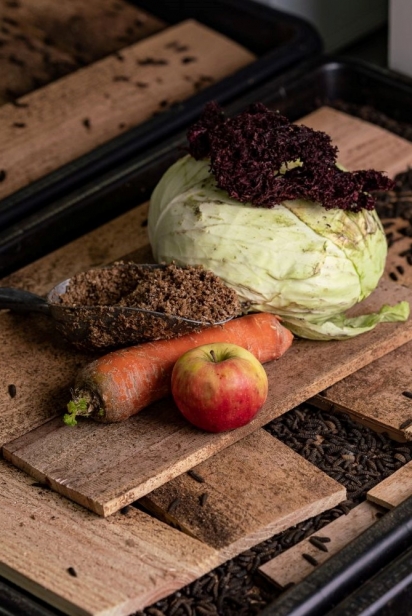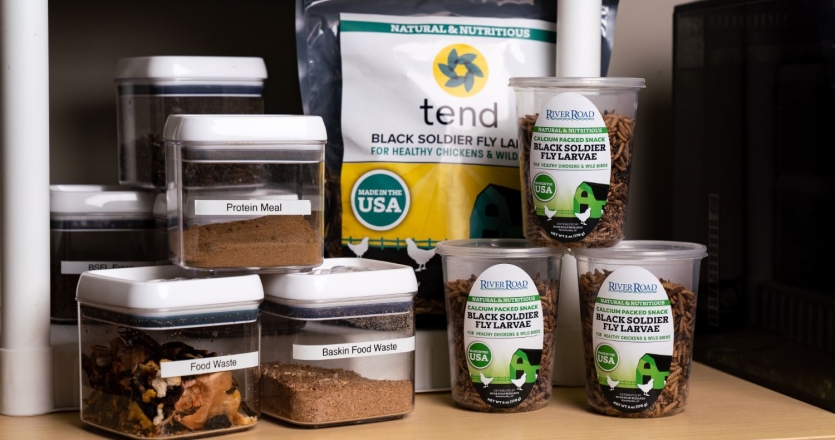River Road Research
For over a decade, microbiologist Radu Popa has focused on the global conundrum of food waste and food supply.
“We’re living with this contrast,” Popa says. “Society is actually wasting a lot of food, but at the same time society is running out of food.”
Worldwide, more than 900 million tons of food waste is generated annually, according to the United Nations. The U.S. alone creates roughly 103 million tons of food waste each year. Much of it ends up in landfills, becoming the largest component of the nation’s trash and a significant contributor to greenhouse gas emissions, according to the U.S. Environmental Protection Agency.
Yet, the world faces a food shortage, particularly of protein. The UN estimates that the world will need 70 percent more food by the time the population reaches 10 billion in 2050. Demand for meat, milk, eggs and other animal products is growing with the global population, and producers are hitting the limits of their ability to provide nutrient-rich feed to their livestock.
Popa saw a solution to this dilemma in an insect called the black soldier fly. He had been studying the fly for its ability to produce a chemical that would support organic batteries, but soon recognized it could play another role.
As head of science for River Road Research, a Buffalo-based biotechnology development company and an affiliate of NOCO Energy Corp., Popa has been working on a process that uses the black soldier fly to convert industrial food waste into protein for use in animal feed.
This process aims to reduce greenhouse gas emissions and provide a lower-impact alternative to animal feed ingredients like fishmeal, which depletes wild fish populations.
“Because the water footprint, the greenhouse gas footprint and the land footprint of our production processes is astronomically lower than any other type of protein production in the world, this is a really sustainable solution,” says Bobbie Thoman, director of sustainability and innovation for NOCO, who works closely with Popa as part of the River Road Research team.
The Fly in the Process
In recent years, the black soldier fly (Hermetia illucens) has become a star in the world of insect farming. Native to South America, it is now found worldwide in warmer climates. It is valued for its high protein content and for its ability to eat through enormous quantities of organic waste. It also does not sting, and unlike the common housefly, it does not carry disease.
River Road Research uses the black soldier fly at all stages of its brief life cycle, from egg to larva to pupa to adult. The larvae, however, play the biggest role, consuming food waste and ultimately becoming the source of protein for animal feed.
At River Road Research’s facility on Leslie Street in East Buffalo, the larvae are kept in a warm, humid room where they are fed pre-consumer industrial food waste. That can include beer mash from brewing, discards from bread and cereal manufacturing, and grape pomace from juice production.
Unlike household food waste, these sources are not contaminated by plastic, glass or other non-food materials.
“They have these perfect streams of food waste that just haven’t been properly managed in the past,” Thoman explains. “That’s the type of food waste that we’re looking for here.”
Black soldier flies have the ability to eat only as larvae, and they are voracious, consuming up to 10 times their body weight every day, Popa says.
They grow rapidly, up to 2,000 times their body size over about 15 days, to reach an inch in length. At this stage, they are ideal for harvest—full of the protein and fats they would need to survive their transition into adults.
Popa and his team harvest most of the larvae for processing, leaving about 10 percent to mature and reproduce.
The harvested larvae are frozen and dried inside a giant vacuum chamber and put through a separator to remove excess food waste or larvae excrement, called frass.
The larvae are then loaded into a press—similar to those used for extracting vegetable oil—that separates the larvae’s protein into a powder and the fat into an oil that solidifies at room temperature.
The protein meal and fat can then be used as individual ingredients for customizing feed for fish, poultry and livestock.
“The industry uses both, but they want the flexibility to use them in different proportions,” Popa says, explaining, for example, that cows may need different proportions of fat and protein at different ages.
River Road Research is partnering with researchers nationwide to formulate animal feed using the protein meal. Their projects include a Texas scientist who is testing the protein meal in a finishing feed for cows that could reduce their methane outputs. Another project is looking to find the ideal combination of protein meal for red drum fish and Atlantic salmon.
Waste Not, Want Not
Recently, the New York State Pollution Prevention Institute at the Rochester Institute of Technology analyzed the potential greenhouse gas impact of River Road Research’s technology. It found that their process of diverting industrial food waste to produce insect protein meal could save an estimated 6.5 metric tons of carbon dioxide equivalent emissions per metric ton of protein meal.
The study also found that this process has the potential to reduce greenhouse gas emissions by an estimated 7 metric tons per metric ton of protein meal when compared to production of wild-caught Peruvian fishmeal, the most sustainable fishmeal currently available.
The environmental impact of this process also extends beyond climate.
In order to feed 1 billion people, ocean fisheries need to produce as much as 6 million tons of fishmeal to use as animal feed, Popa explains. Fisheries worldwide are already harvesting at capacity, ultimately limiting the potential to produce more protein for human consumption.
By comparison, black soldier flies have the potential to create as much as 5 million tons of protein from the usable food waste generated by 1 billion people, Popa estimates.
“We do not need to destroy the ocean to such an extent,” he says.
Another priority for River Road Research is to produce no waste themselves. They work to find every possible use for what they generate as they convert food waste into protein.
The frass, for example, has potential as a non-synthetic fertilizer that could be a component of soil mixes or added to compost.
In addition, River Road Research provides some of the food for the fish at the Buffalo and Erie County Botanical Gardens.
They are also packaging small quantities of whole dried larvae as snacks for backyard chickens. Sold under NOCO’s brand Tend, these snacks are available at the Clyde’s Feed & Animal Centers in Hamburg and Lockport.
“We are finding that Buffalo backyard chickens love it because it allows them to keep their nutrients during the winter,” Thoman says. “It gives them thicker feathers and more fat.”
Thoman, who grew up in Western New York, focused her career on sustainability after working at a grocery store and a food distribution warehouse during high school and college.
“I was just constantly throwing out food, and I thought that there must be a better way,” she recalls. With a background in political science, she went to work in Canada, which had more robust food waste diversion programs than the U.S. There, she delved into greenhouse gas solutions and using waste streams as resources in industrial processes.
When she learned that NOCO was working with black soldier fly, she moved back to help develop and commercialize River Road Research’s technology.
River Road Research is planning to rebrand and relaunch later this year, and they are working to scale up their process to bring more products to market. They will be among several companies in North America that use black soldier fly, but Thoman says they are uniquely positioned with their expertise, focus on industrial food waste and even their location in Western New York. Beyond access to shipping throughout the Northeast and Canada, they also have access to the talent and skills at local universities.
“We have a growing population here in Buffalo of younger people,” Thoman says. “This isn’t scary to them. It’s exciting and they want to be a part of it.”


